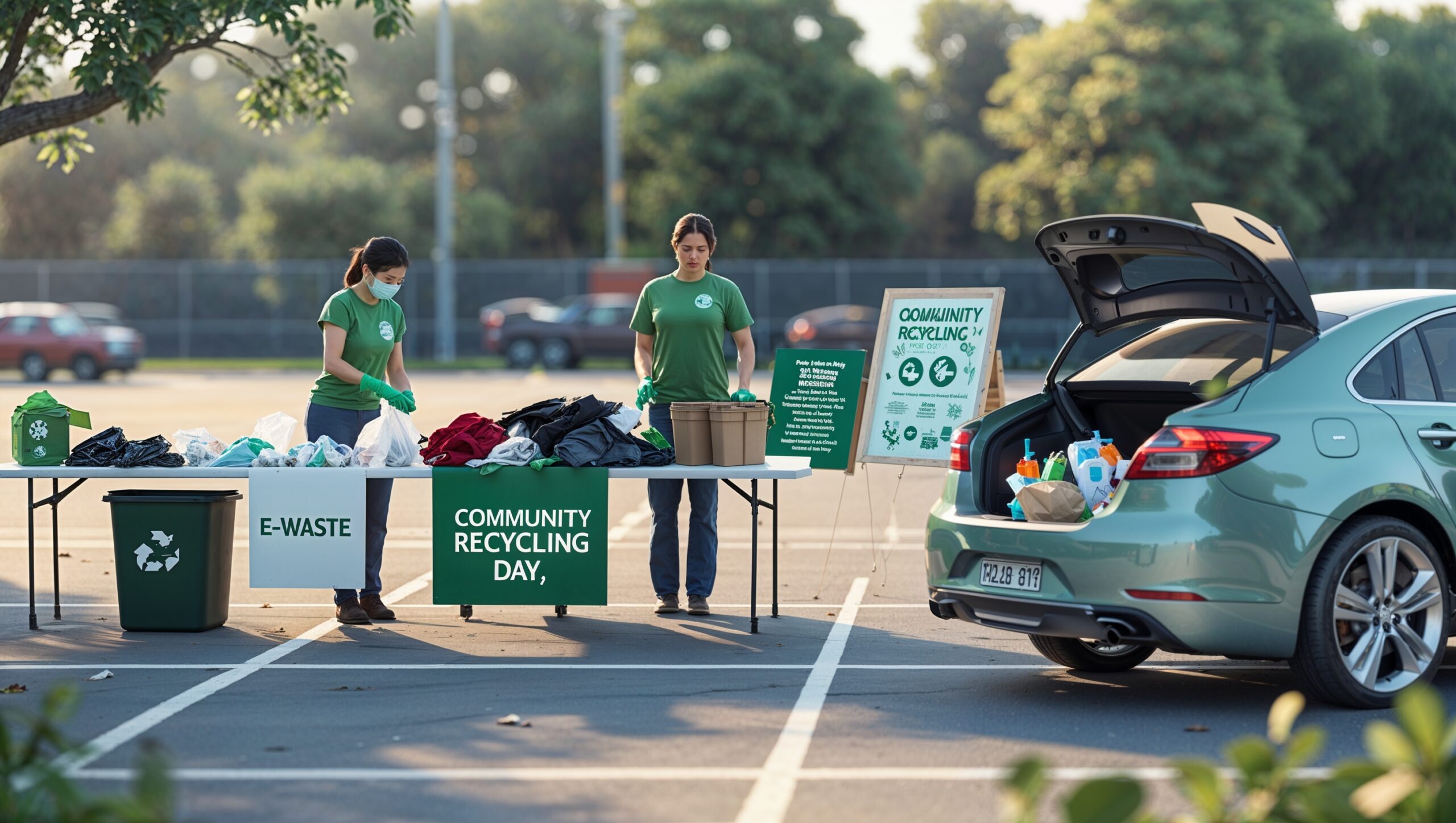Want to make a difference beyond your own home? Organizing a community recycling drive is a powerful way to raise awareness, reduce local waste, and bring people together around a common purpose: protecting the planet.
In this article, you’ll learn how to plan, promote, and run a successful recycling drive — whether it’s for electronics, clothing, plastic, or a little of everything.
Why Community Drives Matter
While individual recycling is important, community-scale efforts:
- Collect large volumes of hard-to-recycle items
- Prevent illegal dumping or landfill overflow
- Engage and educate people who might not recycle at home
- Build local connections and environmental pride
- Create opportunities for volunteerism and outreach
Whether it’s a weekend event or a recurring program, a recycling drive turns eco-action into community action.
Step 1: Choose Your Focus
Decide what you’ll collect based on local needs and logistics.
✅ Common options:
- E-waste (phones, cables, laptops, printers)
- Clothing and textiles
- Batteries and light bulbs
- Plastic film and bags
- Used books or school supplies
- Glass or aluminum (if not picked up curbside)
🎯 Tip: Focus on one or two item types for your first drive to keep it manageable.
Step 2: Partner with the Right Organizations
To ensure responsible disposal, team up with:
- Local recycling centers or waste haulers
- Nonprofits or charities (for textile or book donations)
- Municipal sustainability departments
- E-waste recyclers or electronics stores
- Schools, libraries, or churches as collection sites
✅ Bonus: Some partners may offer logistical support or donation receipts.
Step 3: Choose a Location and Date
Pick a site that’s central, accessible, and has parking.
🏢 Good locations:
- School parking lots
- Community centers
- Farmer’s markets
- Libraries or parks
✅ Choose a weekend date and promote 2–4 weeks in advance. Consider weather and holidays.
Step 4: Plan Supplies and Setup
Make your space organized, safe, and volunteer-friendly.
🧰 What you’ll need:
- Tables and chairs
- Clearly labeled bins or boxes for each item type
- Gloves and safety gear (especially for e-waste)
- Sign-in sheet or digital tracker for participants
- Handouts or posters with recycling tips
- First aid kit and sanitizer
Assign roles: greeters, sorters, educators, transporters.
Step 5: Promote Your Drive
Great communication = great turnout.
📣 Use:
- Social media (Facebook groups, Instagram, local pages)
- Flyers in schools, cafes, gyms, or coworking spaces
- Email lists from neighborhood groups or HOAs
- Posts in apps like Nextdoor or WhatsApp
- Local newspapers or radio (if applicable)
🎨 Make your promo eye-catching and clear:
“What to Bring | When | Where | Why It Matters”
Step 6: Educate as You Collect
Use the drive as a teaching moment.
✅ Ideas:
- Display facts about recycling and waste reduction
- Set up a “Did You Know?” board
- Offer printouts on what your city accepts curbside
- Share info on how to recycle at home year-round
- Ask volunteers to explain sorting and contamination
Small conversations can lead to lasting change.
Step 7: Track Results and Celebrate
After your drive, gather and share your impact.
📊 Track:
- Number of participants
- Total weight or volume of items collected
- Number of items diverted from landfills
- Donations to charities or recyclers
🎉 Share results via:
- A thank-you post or email blast
- Social media shout-outs to partners and volunteers
- Photos from the event (with permission)
Celebrating builds momentum for the next drive.
Step 8: Plan What’s Next
Use your first event as a foundation:
- Repeat every season or year
- Expand to include new items (like compost or hard plastics)
- Partner with schools for student engagement
- Apply for small grants to grow your reach
- Turn your drive into a monthly drop-off program
Your impact doesn’t end when the bins are emptied.
A Small Event With Big Potential
When you organize a community recycling drive, you’re not just collecting waste — you’re creating awareness, building habits, and inspiring others to take action.
It’s proof that one person — with the right plan and a little help — can spark real change.
Because sustainability isn’t a solo mission. It’s something we build, together.
